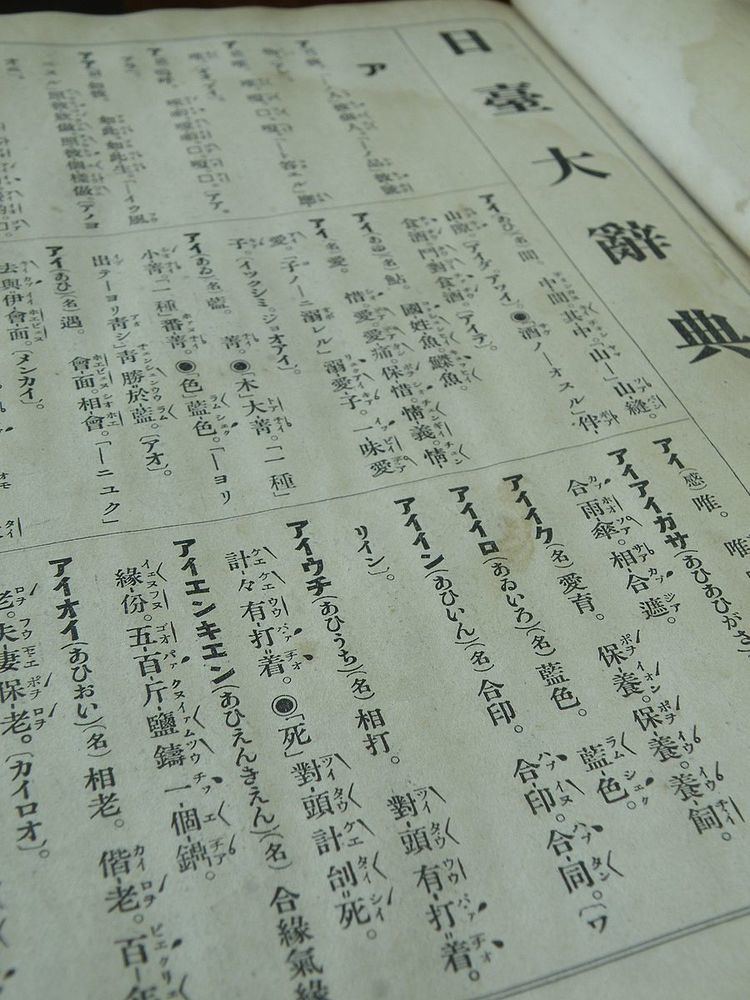Time period 1896 - 1945 | ||
 | ||
Parent systems Oracle Bone ScriptSeal ScriptClerical ScriptRegular script (Kanji)Man'yōganaKatakanaTaiwanese kana | ||
Taiwanese kana (タイヲァヌギイカアビェン) is a katakana-based writing system that was used to write Taiwanese Hokkien (commonly called "Taiwanese") when the island of Taiwan was under Japanese rule. It functioned as a phonetic guide to hanzi, much like furigana in Japanese or Zhuyin fuhao in Chinese. There were similar systems for other languages in Taiwan as well, including Hakka and Formosan languages.
Contents
The system was imposed by Japan at the time, and used in a few dictionaries, as well as textbooks. The Taiwanese-Japanese Dictionary, published in 1931–32, is an example. It uses various signs and diacritics to denote sounds that do not exist in Japanese. The system is chiefly based on the Amoy dialect of Hokkien.
Through the system, the Office of the Governor-General of Taiwan aimed to help Taiwanese people learn the Japanese language, as well as help Japanese people learn the Taiwanese language. Linguistically speaking, however, the syllabary system was cumbersome for a language that has phonology far more complicated than Japanese. After Japanese administration ended, the system soon became obsolete. Now, only a few scholars, such as those who study the aforementioned dictionary, learn Taiwanese kana.
Currently, Mojikyo is the only piece of software/encoding that fully supports the system. Unicode lacks small katakana wo and tone signs; although it also lacks precomposed overlined and underdotted kana, combining character sequences containing the combining overline and combining dot below are sufficient for representing overlined and underdotted kana.
The system has undergone some modification over time. This article is mainly about the last edition, used from roughly 1931.
Basic rules
Mapped sounds are mostly similar to katakana in Japanese, with the kana ヤ, ユ, ヨ, ワ, ヰ, and ヱ not used. Each syllable is written with two or three kana (with a few exceptions). Notable differences include:
Vowels
Consonants
Tone signs
There are different tone signs for normal vowels and nasal vowels.
Syllable Chart
- Tone signs are always needed for a syllable.
- [ɡ] always takes normal vowel tone signs; [m], [n], [ŋ] always take nasal vowel tone signs.
- Some spellings are not clear. 仔(á) was sometimes written as ア rather than アア. 的(ê) was sometimes written as エ rather than エエ.
- [ɔ] is spelt with オ, such as in オオ, ポオ, イオ, ピオ, and so on.
